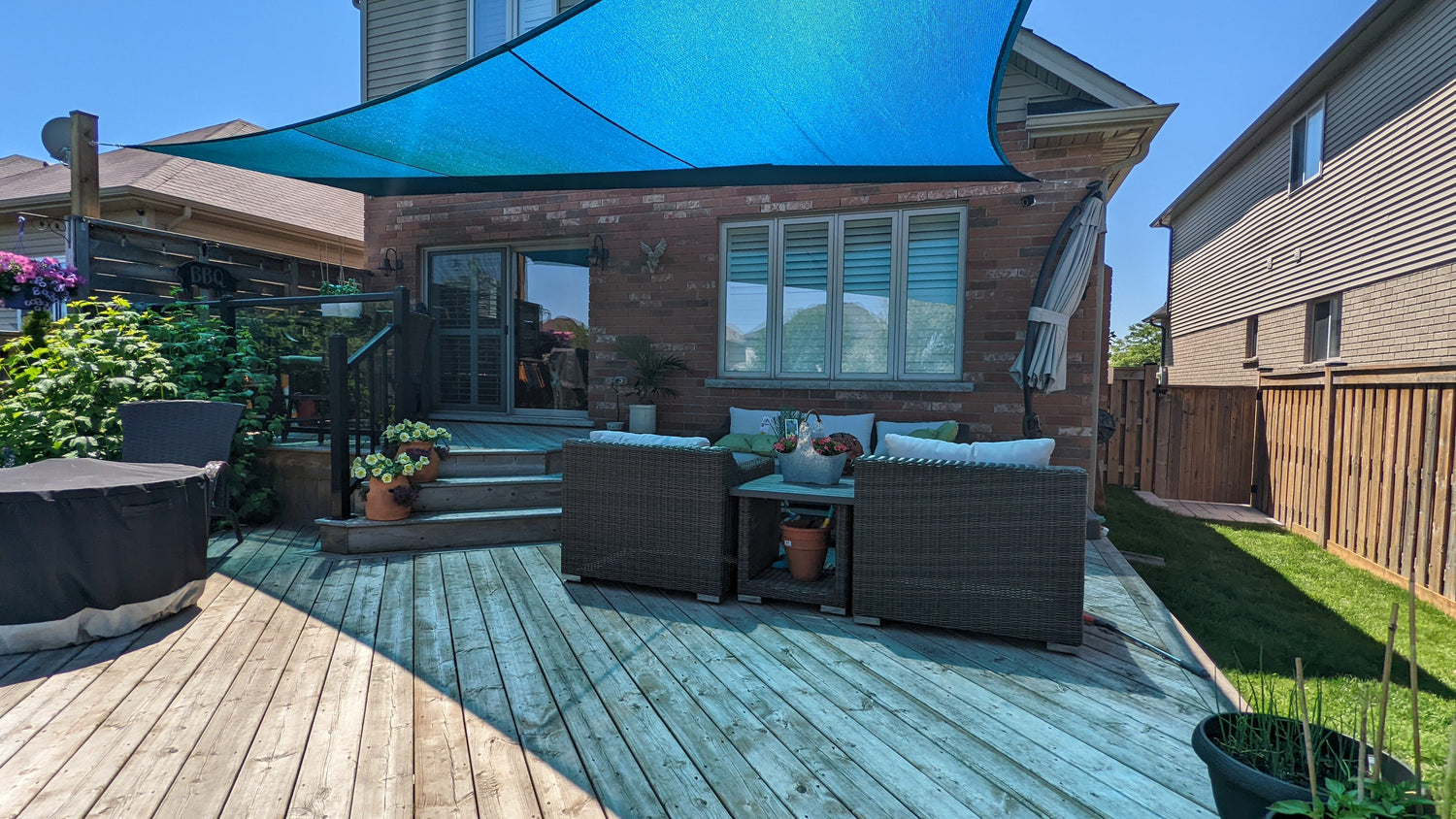Our YouTube channel includes detailed installation guides, frequently asked questions, product overviews and lots more. We are always open to content ideas so please let us know if there is a topic you would like us to cover.
Stay Safe Under the Sun: The Science of UV Protection with Shade Sails

Shades UV Protection
As we dive into the era of increasing environmental concerns, proper sun protection has become more crucial than ever before. One of the most potent solutions to mitigate harmful sun rays is through 'Shades UV protection.' This innovative approach is made possible via shade sails and provides a physical barrier between you and harmful ultraviolet (UV) radiation. Now, let's delve into the mechanics of this UV protection mechanism and address some commonly asked questions.
Possessing a scientific understanding of what UV radiation is and how it poses a risk to our health is essential. UV rays are invisible to the human eye and are part of the electromagnetic spectrum that reaches the earth from the sun. When these rays come into direct contact with our skin, they can cause harmful effects such as sunburns, premature aging, and even skin cancer.
This is where 'Shades UV protection' comes into play. Shade sails, designed using UV-resistant materials, can effectively block out a significant portion of these hazardous rays. The textile fabric used in their creation can stop up to 98% of UV radiation from penetrating, hence significantly reducing the probability of skin and eye damage.

One frequently asked question is how the shape and color of the shade sails affect their effectiveness. It's interesting to note that darker shades generally provide better UV protection due to their ability to absorb more UV rays. Triangular or square shade sails provide almost equal protection, with the power of the protection lying more in the fabric and installation angle than the shape itself.
Another common concern is maintenance. Rest assured, shade sails are relatively easy to maintain. Regular checks for wear and tear, combined with periodic cleaning with mild dish soap, can prolong their effectiveness and durability.
Furthermore, people often wonder if shade sails can provide ample protection throughout the day. Even though their protective ability may slightly decrease when the sun is at its peak, due to the angle of UV rays' incidence, they still block a large portion of these rays.
Finally, a crucial point to mention is that although shade sails considerably decrease the risk of UV damage, complete reliance on them is not recommended. Coupling their use with other UV protection measures like wearing sun-protective clothing, sunglasses and sunscreen, would optimize your defense against harmful sun exposure.
FAQs: Understanding Shade Sails and UV Protection
What are shade sails and how do they provide UV protection?
Shade sails are a type of canopy made from durable UV-resistant fabric designed to provide shade and protection from the sun's harmful rays. They are typically mounted on poles or attached to a building and come in various shapes and sizes. Shade sails work by blocking the ultraviolet (UV) rays from the sun, thus providing a cooler and safer environment underneath. They are infused with UV inhibitors during the manufacturing process. When the sun’s rays, including UV rays, hit the shade sail, these UV inhibitors absorb and reflect the UV radiation, preventing most of it from passing through.
How effective are shade sails in providing UV protection compared to other methods?
Shade sails can block out 90-99% of harmful UV rays depending on the quality of the fabric used, making them as or more effective than many other sun-protective measures. For instance, a beach umbrella provides comparatively less coverage and may only block about 70% of UV rays.
Sunscreen, another widely used method of UV protection, varies in its effectiveness based on SPF rating and user application. It should be noted, however, that shade sails should be used in conjunction with other UV protective measures such as sunscreen and UV-protective clothing for optimal protection.

What is the science behind UV protection provided by shade sails?
The science behind UV protection offered by shade sails lies in their construction. The fabric used in making shade sails is typically treated with specific chemicals that give it UV absorbing properties. When UV radiation hits the surface of the shade sail, these UV-absorbing chemicals, or UV absorbers, absorb the high energy UV radiation and convert it into lower energy radiation, such as heat, thus blocking the harmful rays from passing through the fabric. The tighter the weave and the darker the color of the fabric, the more UV radiation is absorbed.
How can I properly use shade sails to receive maximum UV protection?
To get the most UV protection from a shade sail, you should ideally position it in a way that it shades your outdoor area during peak sunlight hours, which is typically from 10 am to 4 pm. Since the angle of the sun changes throughout the day and across seasons, consider installing multiple shade sails or ones that can be adjusted for the shifting sun.
A shade sail should provide a significantly cooler environment underneath, but remember that UV rays can be reflected off surfaces like water and concrete, so additional sun protection measures such as wearing sunscreen and sunglasses should be used. Also, ensure the fabric of the shade sail is of high quality with a reliable UV protection factor to maximize your protection from the sun's harmful rays.
In conclusion, 'Shades UV protection' using shade sails is an effective, cost-friendly way to hinder the dangerous effects of sun exposure while enjoying your outdoor spaces. However, they should be used as a part of a broader UV protection strategy to ensure holistic sun safety. Stay informed, and stay safe under the sun!



